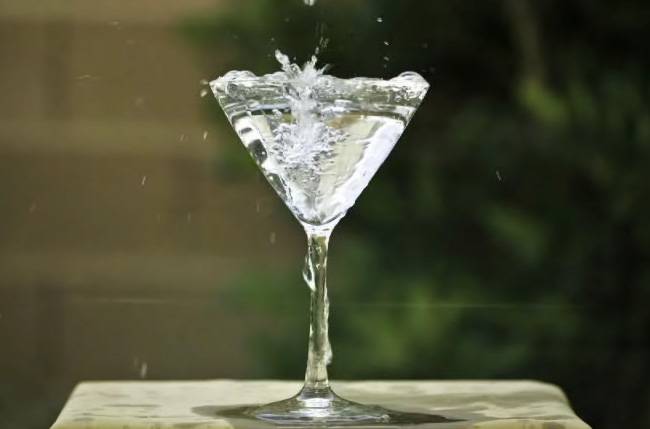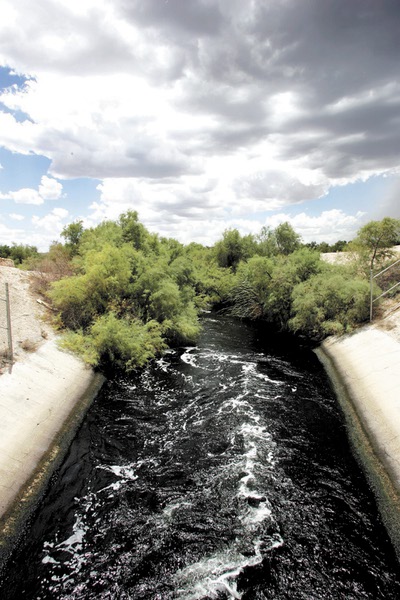
LAS VEGAS SUN
Monday, Dec. 21, 2009 | 2 a.m.
Sun Coverage
- Nevada officials defend water after low ranking (12-15-2009)
- Quagga mussels a toxic threat to Lake Mead (11-9-2009)
- Group seeks ‘imperiled’ status for Southern Nevada waterways (11-16-2009)
- For Want of Water: Find video reports, interactive graphics and expanded coverage of Las Vegas' water shortage
Las Vegas landed near the top of another “worst in the nation” list last week, this time for water quality.
But it’s not just local water officials who say the dubious distinction was undeserved. A UNLV public health researcher agrees.
Water managers for years have touted the quality of tap water in Southern Nevada. The Southern Nevada Water Authority and the water utilities it includes own some of the most advanced water filtration operations in the U.S.
And the Las Vegas Valley Water District does so much intensive testing of its water that it wound up working against the district.
The Environmental Working Group last week told the world that the water district had the third worst water in the nation compared with 100 other municipalities. It cited the presence of several toxins — including radon, uranium and lead — in local tap water in recent years.
But local water authorities said the national environmental organization’s scoring and ranking system penalized Las Vegas for its frequent testing and for testing more intensively.
The group’s report was aimed at garnering public support for stricter water quality standards. It listed on its worst-water chart water districts that had reported the most instances of potentially dangerous toxin levels.
It didn’t set any bar for the testing, however. Most water agencies test for parts per million of toxins in water. But Southern Nevada water districts do much more intensive tests that can detect toxins in the parts per billion or even trillion.
Because the Environmental Working Group set “healthy levels” for many toxins at zero, the occasional trace amount of, say, arsenic in the parts per billion took points off Las Vegas’ score while other water districts that only test to parts per million didn’t lose points.
Their levels were technically zero even if trace amounts could have been found with better technology. Southern Nevada also got dinged for discovering minute amounts of heavy metals such as lead, for which many water districts don’t test.
“In terms of their ranking, the data used is incomplete and inconsistent, so people shouldn’t put much stock in it,” a Las Vegas Valley Water District spokesman J.C. Davis said. “It is a shame that, by using these kind of sensational scare tactics to achieve their political aims, the EWG is punishing utilities for being proactive.”
The Environmental Working Group reported that the water district tested for toxins more than 9,350 times since 2004. Henderson tested 779 times between 2004 and 2005. North Las Vegas, which the EWG said had the eighth-worst water quality, tested 778 times since 2004. The national average for tests since 2004 is 420.
Shawn Gerstenberger, executive associate dean of UNLV’s School of Community Health Sciences, said it is a valid complaint by local water authorities that testing more frequently and with better equipment went against them.
Gerstenberger said the region should be more worried about detecting and eliminating new chemical threats from the water system.
“We do a lot of research looking at water-dependent wildlife, including humans,” Gerstenberger said. “Fortunately what we’ve seen in our research is that the levels of regulated compounds and even some potentially toxic unregulated compounds in our water have been low or untraceable. The challenge is the new compounds coming on the market — things released from pharmaceuticals.”
Effects of these new chemical compounds — especially when mixed and consumed frequently at low dosages — are largely unstudied. He said the water district’s time would be better spent asking the public not to flush unused medications or refrain from pouring household chemicals down the drain than explaining the occasional minute trace of arsenic detected in drinking water.
These new threats could also be addressed regionally through tougher wastewater treatment standards on systems such as the Colorado River that provide drinking water.


Join the Discussion:
Check this out for a full explanation of our conversion to the LiveFyre commenting system and instructions on how to sign up for an account.
Full comments policy